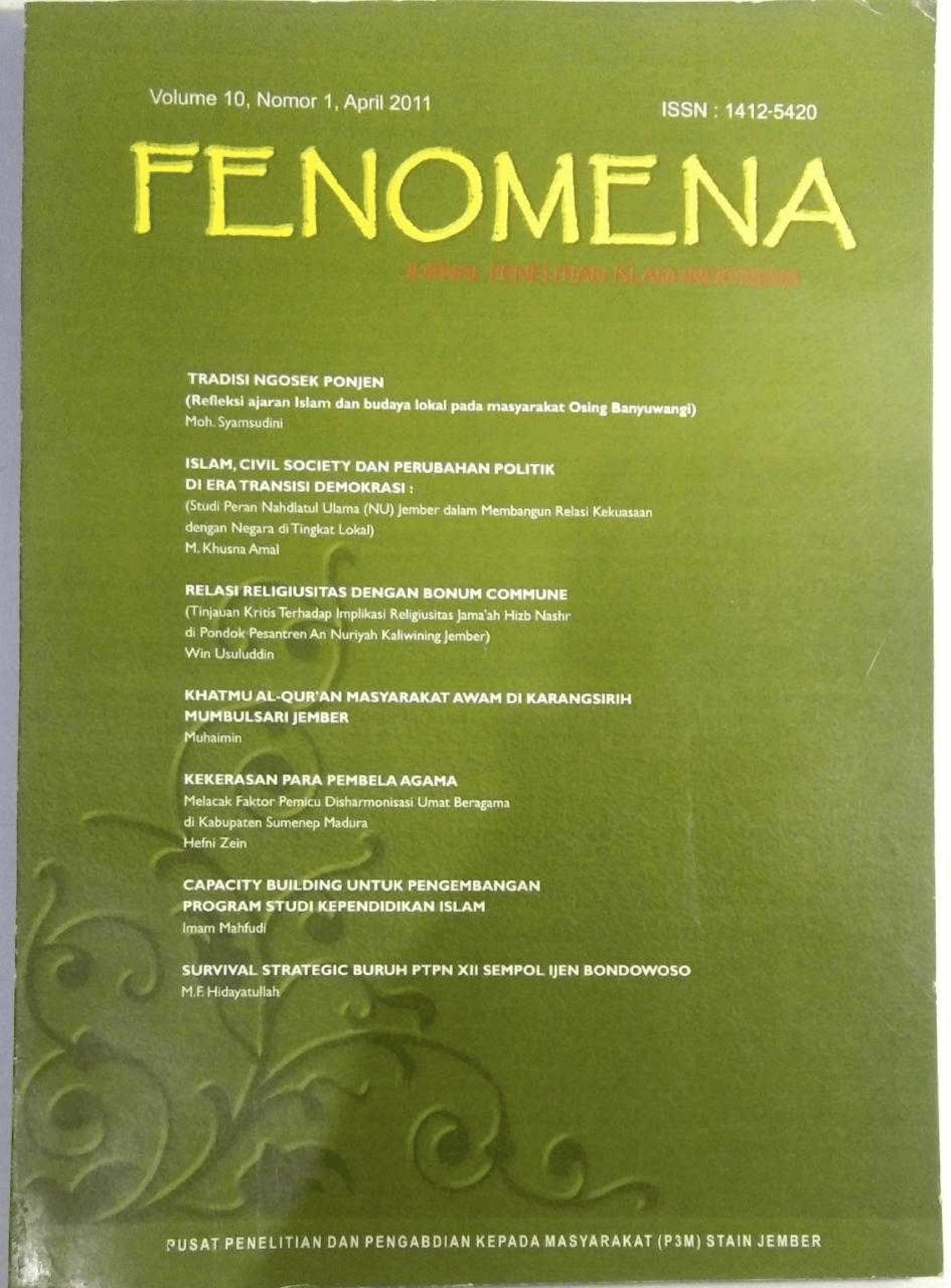Capacity Building untuk Pengembangan Program Studi Kependidikan Islam
Capacity Building for the Development of Islamic Education Study Programs
DOI:
https://doi.org/10.35719/fenomena.v10i1.493Capacity building is an ongoing process to improve the ability of individuals, groups, organizations, and academics to identify and address challenges in institutional development. In institutions such as the Islamic Education Study Program – the State College of Islamic Studies (STAIN) Jember, capacity building should be viewed as an effort to develop human resources (HR) in three areas: (1) organizational development, (2) partnership, and (3) civil society strengthening. This aims to achieve the independence of the study program.
Capacity building adalah proses berkelanjutan untuk meningkatkan kemampuan individu, kelompok, organisasi, dan akademisi dalam mengidentifikasi dan menghadapi tantangan pengembangan suatu lembaga. Capacity building dalam lembaga seperti Program Studi Kependidikan Islam – Sekolah Tinggi Agama Islam Negeri (STAIN) Jember perlu dipandang sebagai upaya pengembangan sumber daya manusia (SDM) dalam tiga aspek, yaitu: (1) pengembangan organisasi, (2) kemitraan, dan (3) penguatan masyarakat sipil. Tujuan ini dimaksudkan untuk mencapai kemandirian program studi.
Downloads
References
Amherst H., Wilder. (2000). Building Capacity. Tersedia di: http://www.wilder.org/suc/capbuild.
Barabasi, Albert-Laszlo. (2002). Linked: The New Science of Networks. Cambridge: Perseus Publishing.
Bernstein, Philip. (1997). Best Practices of Effective Nonprofit Organizations. Washington, D.C.: The Foundation Center.
Bogdan, R.C., & Biklen, S.K. (1998). Qualitative Research for Education: An Introduction to Theory and Methods. Boston: Allyn and Bacon.
Cordes, Joseph, Henig, Jeffrey R., & Twombly, Eric C. (2000). Nonprofit Human Service Providers in an Era of Privatization: Organizational Adaptation to Changing Environments in Three Policy Areas. Dalam Nonprofits in Urban America, disunting oleh Richard C. Hula & Cynthia Jackson-Elmoore. Westport, Conn.: Quorum Books.
De Vita, Carol J., Flemming, Cory, & Twombly, Eric C. (2001). Building Nonprofit Capacity: A Framework for Addressing the Problem. Washington, D.C.: The Urban Institute.
Galaskiewicz, Joseph, & Bielefeld, Wolfgang. (1998). Nonprofit Organizations in an Age of Uncertainty: A Study of Organizational Change. New York: deGruyter.
Gardner, John W. (1988). The Changing Nature of Leadership. Washington, D.C.: Independent Sector.
Mickletwait, John, & Wooldridge, Adrian. (2000). A Future Perfect: The Challenge and Hidden Promise of Globalization. New York: Crown Publishers, Random House Inc.
Miles, Matthew B., & Huberman, A.M. (1994). Qualitative Data Analysis: A Sourcebook of New Methods. London: Sage Publications.
Sussman, Carl. (2004). Building Adaptive Capacity: The Quest for Improved Organizational Performance. Boston: Management Consulting Services.
Trout, Jack. (2004). Trout on Strategy: Capturing Mindshare, Conquering Markets. London: McGraw Hill.
Downloads
Section
License
Copyright (c) 2011 Moch. Imam Machfudi

This work is licensed under a Creative Commons Attribution-NonCommercial 4.0 International License.












